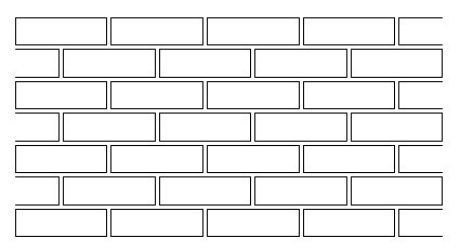TURF - LAYING TURF
NEW LAWNS

Before you decide to lay turf, make sure that that is the best choice for you.
Once you have decided this is the best option, follow the below instructions to make sure that your turf has the best chance of thriving. The cost to lay new turf can really rack up, so make sure you get it right otherwise you will end up spending a lot of money for a dead lawn.
If you need guidance on what to look for when buying turf, check out the
Product Buying Guide.
1. Prepare the Land
The first step is to prepare the land and ensure that it is ready for the turf. First of all, you want to get the ground levelled off and to the correct height. Take a look at the depth of the new turf that you have and ensure that when it is laid on top of the ground, it is at the height you require and blends into any existing lawn.
To level or raise the land, get some fresh, good quality top soil. Even if you don’t need to raise the height of the land, make sure you have used some fresh top soil when preparing the land. You don’t need a huge amount of it - an inch or so should do.
Once you have it at the correct height, make sure that you have cleared anything that may stop your new turf taking and rooting. So clear away any weeds or large stones that could cause problems. If you are removing weeds, be sure to pull them out by hand rather than using a
weed killer, as this will prevent the new growth.
2. Compact the Land
Once you have laid the turf, it is a big job to re-level the land and fill in any subsidence. Because of this, you will want to compact the land thoroughly. Subsidence is only going to occur if you are putting down a lot of new top soil, but it is something to be careful of.
To compact the land, the easiest method is to simply walk over the new top soil and compress the soil with your feet. Make sure you cover the whole area and it is well worth doing a few passes over the area. When you are doing this, you want to apply a large amount of pressure, so don’t try and speed this up by using boards or tools with a large surface area, as it doesn’t work anywhere near as well.
3. Loosen the Soil
Compacting the land is crucial to stop subsidence but it then creates difficulties for the grass roots to penetrate into the new soil. So once you have compacted the lawn, you then want to loosen off the very top layer of the soil - only to a depth of ¼ of an inch or so.
One really easy way to do this is to use a rake. Simply drag the rake over the new soil; don’t apply any pressure when doing this and instead just use the weight of the rake to loosen the very top layer.
4. Lay the Turf
Your land is now all fully prepped and ready for the new turf. When laying your turf, there are a few keys things to make sure you do:
- Use a brickwork style pattern when laying the turf. You want to ensure that the gaps in the turf do not line up, so that it beds in nicely.
- Push the turf as closely together as you can and minimise the gaps as much as possible. If the turf is wet when you lay it, it is going to shrink a bit as it dries and the gaps will really show. It is worth considering the moisture of the turf when laying it and if it is a little dry, this can be helpful as it will expand when watered and fill those gaps for you.
- The turf is going to need to be trimmed down to size to fit the space you are turfing. To do this, get yourself a sharp knife and cut down as required. A Stanley knife normally works well.
- If you are laying any considerable amount of turf, get yourself some large boards to walk on. If you walk on the freshly laid turf, you will start to create compressions in it and the boards help to spread your weight.
5. Fill in the Gaps
When your turf is cut into strips, it will not always be perfectly rectangular. Because of this, you will find that there will be some gaps which you cannot close up by simply pushing the turf together. Because of this, keep a bit of your top soil spare and fill in those gaps with a bit of soil and new seed.
6. Water the Turf
This is a simple one. Water the turf heavily. Get your sprinkler out and soak the new turf; don’t stop until it has puddles on it.
The roots for the new turf are very shallow and are not going to be providing water to the grass, so you need to pick up the slack and get water onto it.
7. Take Care of the Turf
Lastly, make sure that you look after the new turf. Check out what to do here.

